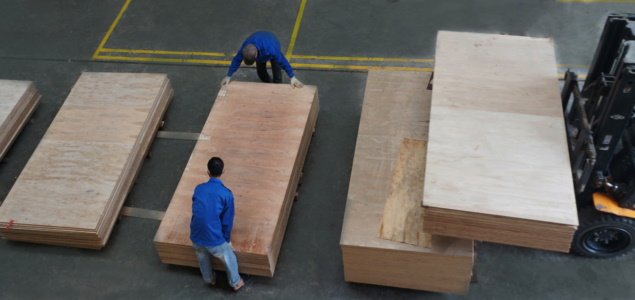In Q3 2023, the Canadian wood products sector experienced a decline in production capacity, reflecting challenges in the broader manufacturing landscape. Despite a slight overall uptick in production capacity across Canadian industries, the wood product manufacturing industry continues its downward trend.
In a recent development, the Canadian wood products sector encountered a decline in production capacity during the third quarter of 2023. Statistics from this period reveal a capacity utilization rate of 76.0%, marking a decrease from 76.6% in the preceding quarter and a more significant drop from 80.6% in Q3 2022.
This concerning trend is indicative of broader challenges within the manufacturing sector, despite a marginal increase in the overall industrial production capacity to 79.7% in Q3 2023, as reported by Statistics Canada. Notably, the wood product manufacturing industry has been on a downward trajectory over the past few quarters.
Unlike some sectors, such as construction, which have maintained relatively steady capacity utilization rates, the wood product manufacturing industry is grappling with challenges that raise questions about its resilience and future strategies.
Factors Influencing the Decline:
Several key factors may contribute to the challenges faced by the wood product manufacturing industry:
- Market Dynamics: The industry is influenced by market dynamics, including demand for housing, furniture, and other wooden products, which can be impacted by economic conditions and consumer preferences.
- Supply Chain Disruptions: Ongoing global supply chain disruptions, exacerbated by factors like the COVID-19 pandemic, transportation challenges, and material shortages, may be affecting the industry’s production capacity.
- Environmental Concerns: Increased environmental awareness and sustainability considerations are shaping consumer preferences, and the industry may face challenges related to meeting evolving environmental standards.
- International Trade Dynamics: Reliance on international trade exposes the industry to fluctuations in global demand, trade policies, and economic conditions in key trading partners.
Industry Response and Future Strategies:
The industry may need to reassess its strategies to navigate the evolving landscape. Exploring avenues for innovation, sustainable practices, and addressing supply chain vulnerabilities could be crucial for its long-term resilience.
While certain sectors, like construction, demonstrate resilience, the wood product manufacturing industry’s challenges highlight the need for adaptation to emerging trends and addressing underlying issues.
Conclusion:
The decline in production capacity for the Canadian wood products sector emphasizes the importance of a comprehensive analysis of the challenges faced by the industry. Adapting to emerging trends and addressing underlying issues will be essential for sustaining growth and resilience in the Canadian wood product manufacturing industry.
Source: Fordaq.com




